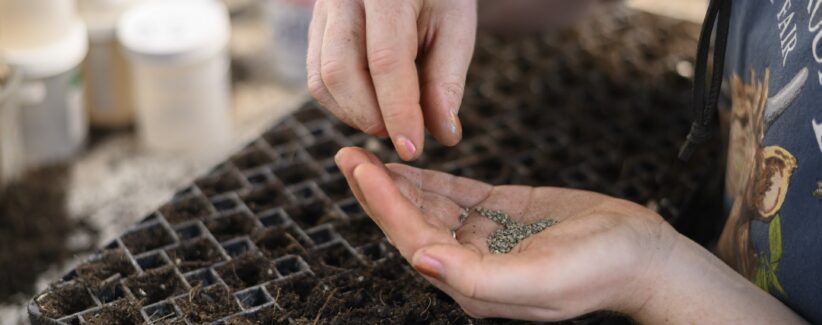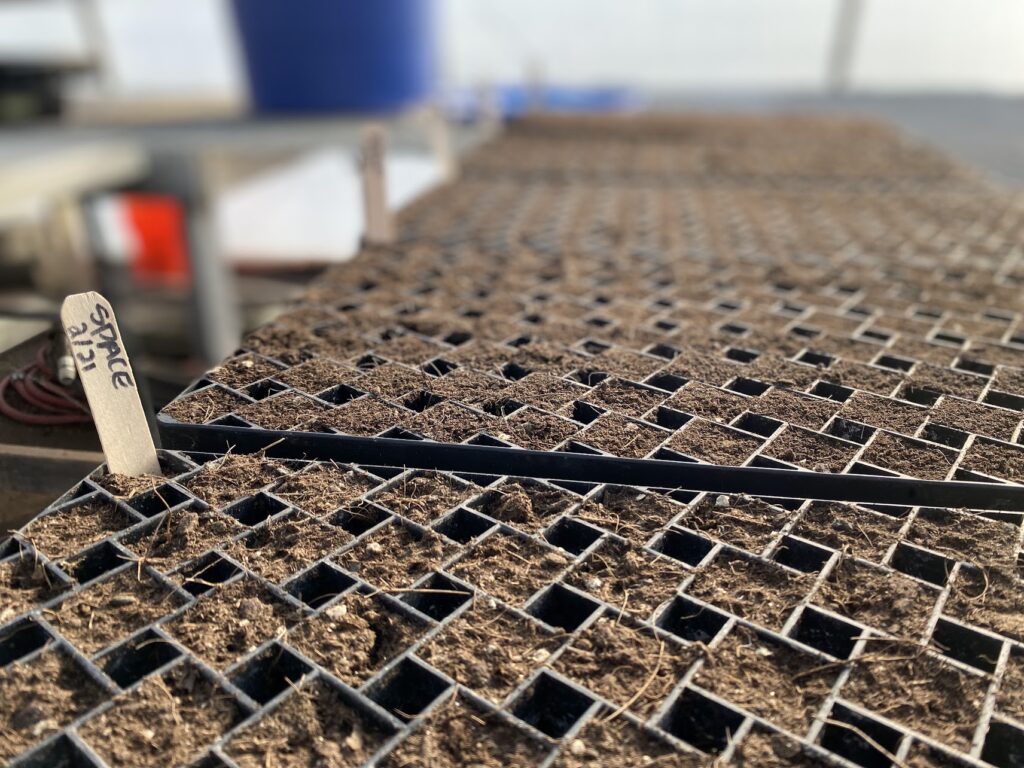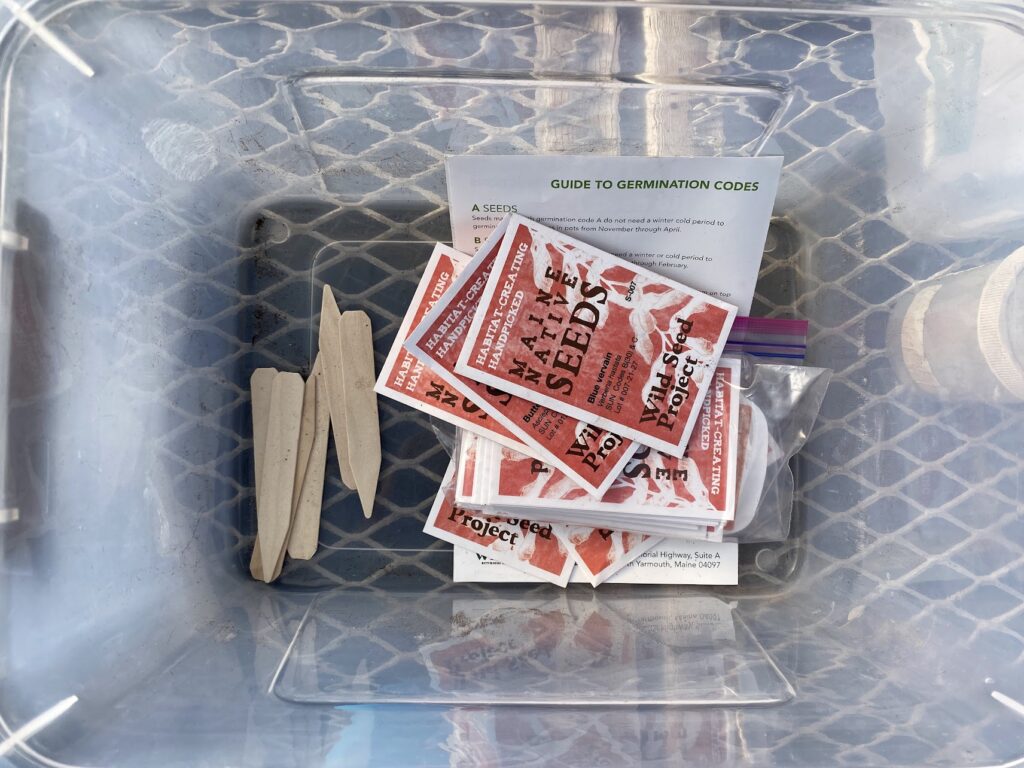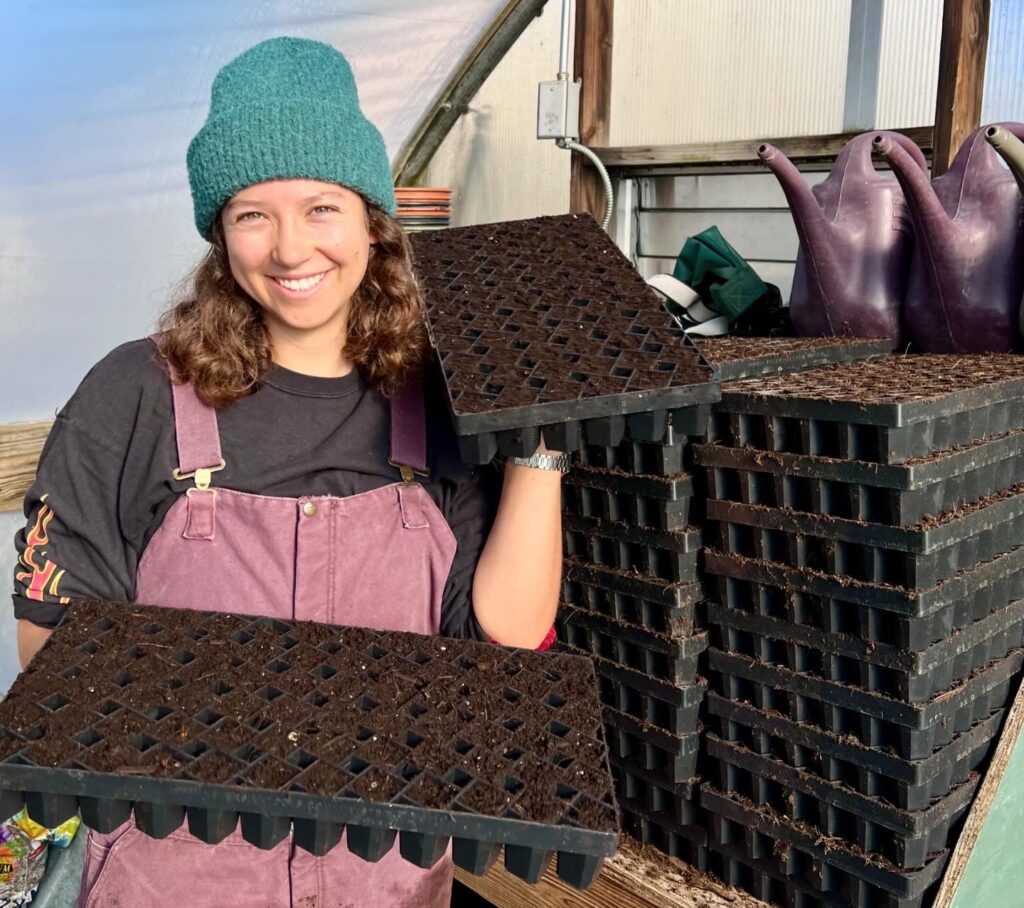Seeds Are Sprouting In The Greenhouse

The fields may be covered in snow, but magic is unfolding inside Gaining Ground’s new greenhouse. It’s seed-planting time!
Last year marked an exciting new chapter for Gaining Ground. The farm team has been buzzing with activity with the recent construction of a state-of-the-art propagation house. The new house, equipped with ergonomic, chest-height seeding benches and work tables, is designed for optimal workflow, crucial for the team managing the early stages of growth.
“It’s been fun to think about how to do this best,” says Gaining Ground Farm Manager Jared Kimler.
The new greenhouse will allow Gaining Ground to start more seeds and, therefore, grow more food as we continue to work to address food insecurity in Massachusetts.

Seeds are magic. They’re the secret to bountiful gardens, resilient food systems, biodiversity, and so much more, but before the team starts them, they have to buy them. Every year, we are grateful to all those who donate to Gaining Ground and help us purchase seeds.
Gaining Ground sources its seeds from various suppliers, including Johnny’s
Selected Seeds, High Mowing Seeds, Territorial Seed Company, and Fedco Seeds. These are the go-to sources for the most common varieties, but sometimes, we also want something that requires a bit of a treasure hunt.

“If you want to grow something specific, you have to track it down. For example, there’s a radish I love, the Purple French Breakfast ‘Felicia’ radish. It tastes as good as any other, but it has a striking, beautiful color,” says Jared, who has found seeds for it at the Washington state company Osborne Quality Seeds.
Gaining Ground tries to strike a balance between productivity, resilience, and the unique characteristics that make certain varieties stand out—be it flavor, appearance, or a compelling story.
Once we have the seeds, the timing of the seed starting is a delicate dance. Under the leadership of Assistant Grower Maddie Weikel, who will run the seed starting program this year, the team will dedicate a specific day of the week to seed starting.

Different seeds have vastly different germination and growth timelines. Lettuce, for example, takes about four weeks from seed to transplant, while onions require eight to ten weeks and leeks a whole ten. Cucumbers, on the other hand, are ready to go in just two weeks. The team “reverse engineers” from the intended field planting date to determine the ideal seeding schedule.
A crucial element of this planning involves over-seeding by approximately 20%.
“Sometimes things are really great, and you get 100% germination,” Jared says. “But sometimes it’s poor, so giving that buffer is nice when you go to plant.”
Beyond simply starting seeds, Gaining Ground is also trialing a seed-saving program this year led by Senior Field Crew Member Zoe Tallmadge. They’ll be dedicating a small plot of land on the farm to that trial with Seed Savers Exchange. This collaborative effort will help Gaining Ground’s future harvests, preserve and improve varieties for future seasons, and strengthen the broader agricultural community. Look for updates on that program in future newsletters.